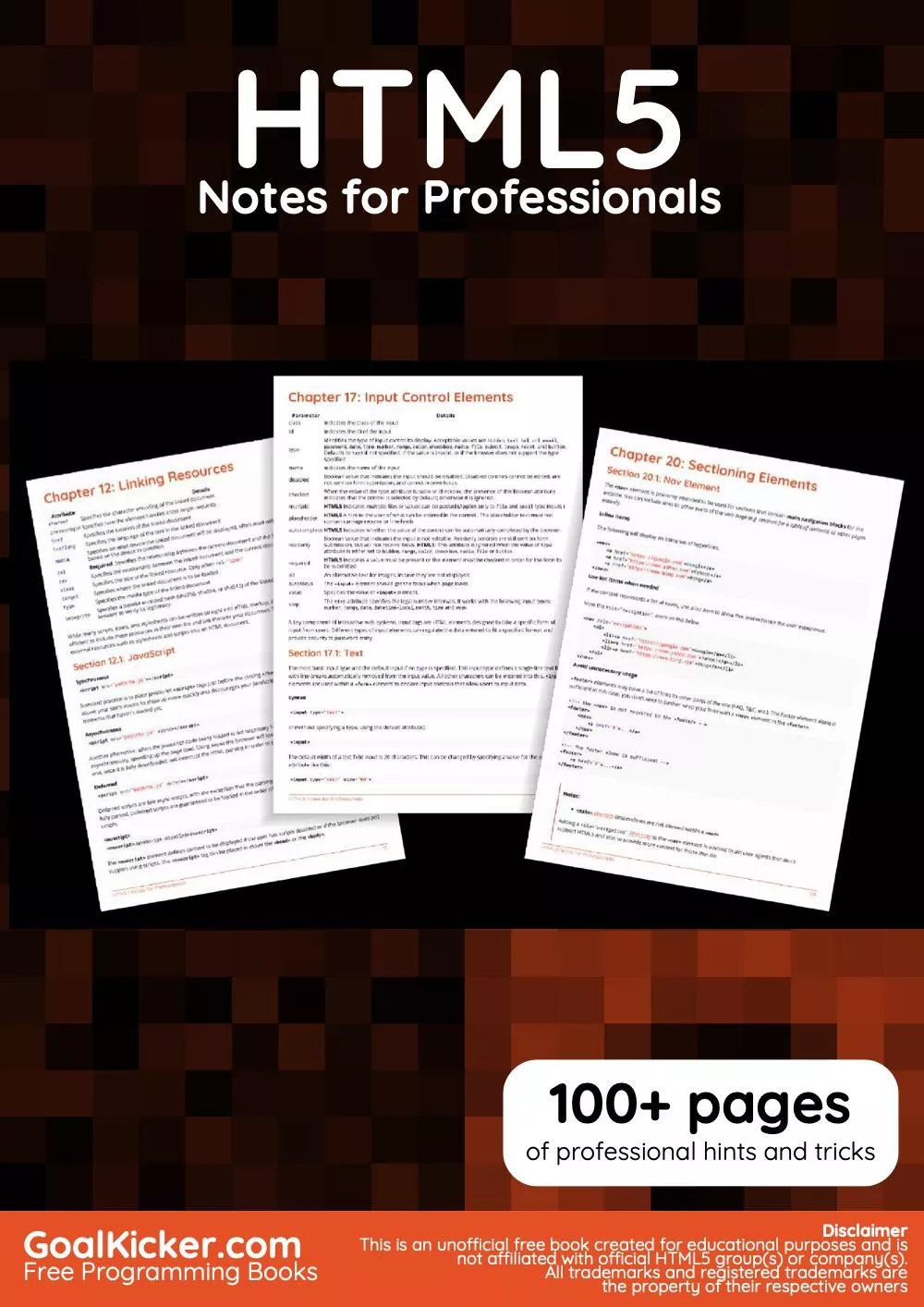This HTML5 Notes for Professionals book is compiled from Stack Overflow Documentation, the content is written by the beautiful people at Stack Overflow. Text content is released under Creative Commons BY-SA, see credits at the end of this book whom contributed to the various chapters. Images may be copyright of their respective owners unless otherwise specified
This is an unofficial free book created for educational purposes and is not affiliated with official HTML5 group(s) or company(s) nor Stack Overflow. All trademarks and registered trademarks are the property of their respective company owners
The information presented in this book is not guaranteed to be correct nor accurate, use at your own risk
Please send feedback and corrections to [email protected]
----
Introduction
HTML (Hypertext Markup Language) uses a markup system composed of elements which represent specific content. Markup means that with HTML you declare what is presented to a viewer, not how it is presented. Visual representations are defined by Cascading Style Sheets (CSS) and realized by browsers. Still existing elements that allow for such, like e.g. font, "are entirely obsolete, and must not be used by authors"[1].
HTML is sometimes called a programming language but it has no logic, so is a markup language. HTML tags provide semantic meaning and machine-readability to the content in the page.
An element usually consists of an opening tag (), a closing tag ( ), which contain the element's name surrounded by angle brackets, and the content in between:
...content...
There are some HTML elements that don't have a closing tag or any contents. These are called void elements. Void
elements include![]() , , and .
, , and .
Element names can be thought of as descriptive keywords for the content they contain, such as video, audio,
table, footer.
A HTML page may consist of potentially hundreds of elements which are then read by a web browser, interpreted
and rendered into human readable or audible content on the screen.
For this document it is important to note the difference between elements and tags: Elements: video, audio, table, footer
Tags:
This is an unofficial free book created for educational purposes and is not affiliated with official HTML5 group(s) or company(s) nor Stack Overflow. All trademarks and registered trademarks are the property of their respective company owners
The information presented in this book is not guaranteed to be correct nor accurate, use at your own risk
Please send feedback and corrections to [email protected]
----
Introduction
HTML (Hypertext Markup Language) uses a markup system composed of elements which represent specific content. Markup means that with HTML you declare what is presented to a viewer, not how it is presented. Visual representations are defined by Cascading Style Sheets (CSS) and realized by browsers. Still existing elements that allow for such, like e.g. font, "are entirely obsolete, and must not be used by authors"[1].
HTML is sometimes called a programming language but it has no logic, so is a markup language. HTML tags provide semantic meaning and machine-readability to the content in the page.
An element usually consists of an opening tag (
There are some HTML elements that don't have a closing tag or any contents. These are called void elements. Void
elements include
Element names can be thought of as descriptive keywords for the content they contain, such as video, audio,
table, footer.
A HTML page may consist of potentially hundreds of elements which are then read by a web browser, interpreted
and rendered into human readable or audible content on the screen.
For this document it is important to note the difference between elements and tags: Elements: video, audio, table, footer
Tags:



